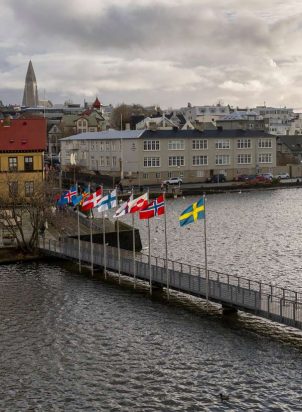Nordregio News Issue 3 2015

A new wave of reforms sweeping over the Nordic countries?
By Lisbeth Greve Harbo
Municipal reforms are gaining political momentum in the Nordic countries, which all face great social changes. Some countries have already pushed their reforms through; others are still struggling with decisions on the matter. Finland has failed after several years of trying to implement a renewed reform process. Norway is in the midst of such a process, and Greenland is reconsidering the reform it undertook in 2009. In this issue of Nordregio News, we review current initiatives on municipal reforms in the Nordic countries. What exactly is happening now, and why?
Iceland leads the way
By Stefania Traustadottir
The autonomy of municipalities is rooted in the human rights chapter of the Icelandic constitution. This legal article protects the citizens’ right to exercise control over issues that concern them. Thus, it secures the existence of Icelandic municipalities, as this fundamental status must be considered in decisions on whether and how existing structures should be changed. It has an enormous influence on the development of Icelandic municipalities.
Norway: steps on the path to reforms
By Terde Kaldager
In Norway, the most recent municipal reform took place more than 50 years ago. Since then, the municipalities have increased their responsibility portfolios with new tasks delegated by the government, while the government has strengthened its control. The municipalities have reacted to the increased workload by managing more of their tasks through intermunicipal co-operation. In this context, the time for municipal reform may have come.
Why did the Finnish local government reform of 2011 fail?
By Siv Sandberg
A decision by the Finnish government on 19th August 2015 marked the end of a fruitless four-year attempt to bring about an extensive reform of municipal boundaries. The aim of the reform was to strengthen the ability of local authorities to perform their legal obligations. Even after voluntary amalgamations, reducing the number of local authorities from 452 in the year 2000 to 317 today, the median size of a Finnish municipality is no more than 6,600 inhabitants. While these relatively small local authorities bear heavy responsibilities for education and social and health care, the system capacity of the local government sector has been a long-term concern of national politicians.
Greenland is rethinking the 2009 merging of municipalities
By Klaus Georg Hansen
On the first day of 2009, Greenland switched from 18 municipalities to just four. The transition had been prepared over several years, and most of the political parties supported the change. The idea behind the transformation was to delegate political decision-making power and economic resources from the central administration to municipal administrations. In reality, one of the very few administration areas that have now been transferred to the municipalities is the administration of land use and spatial planning.




